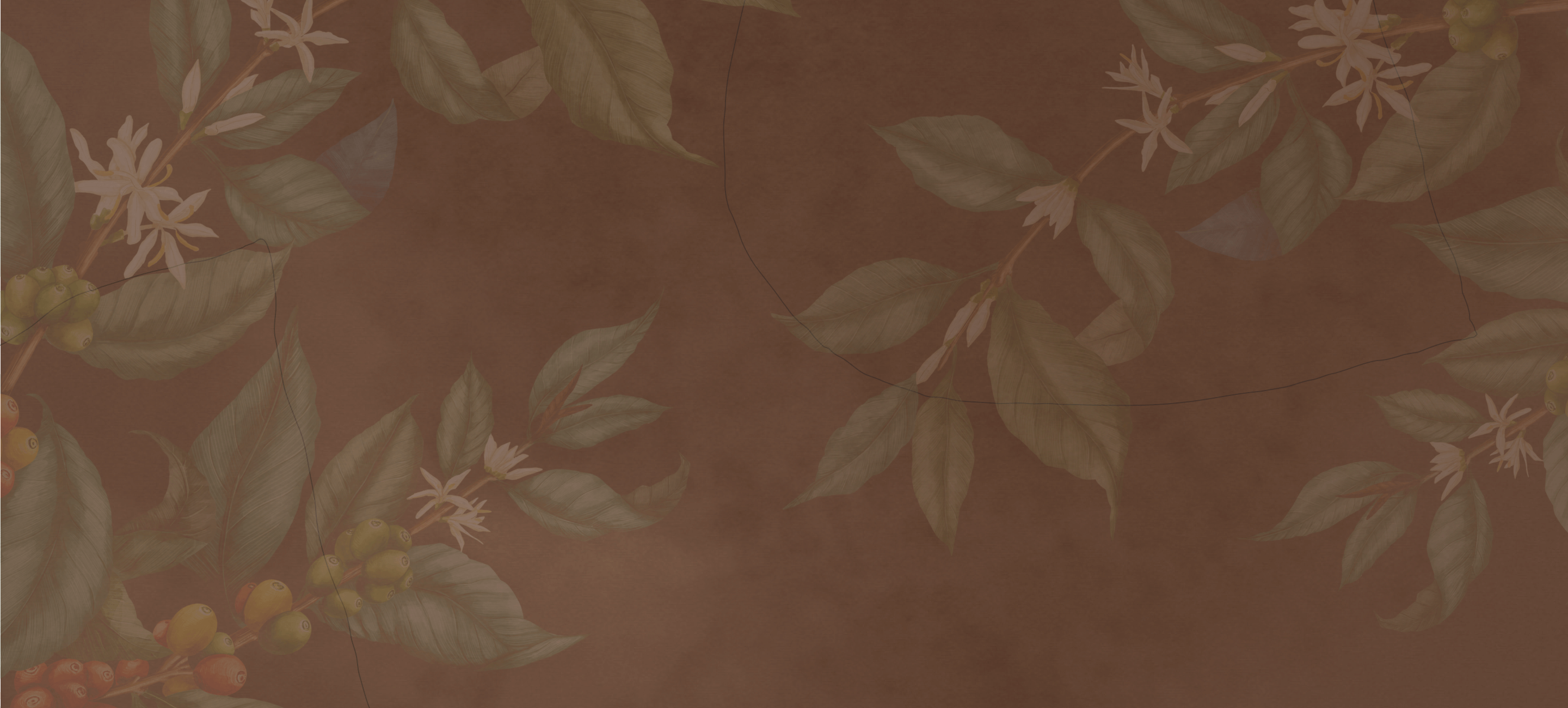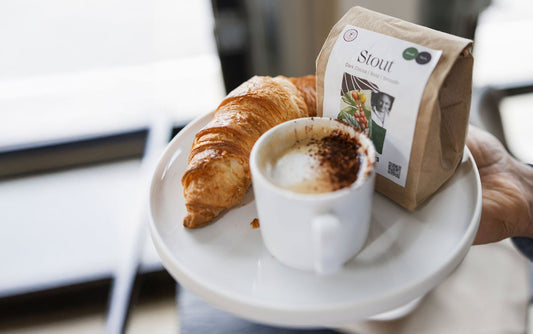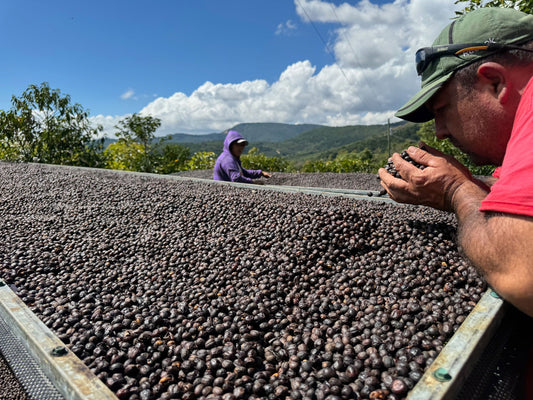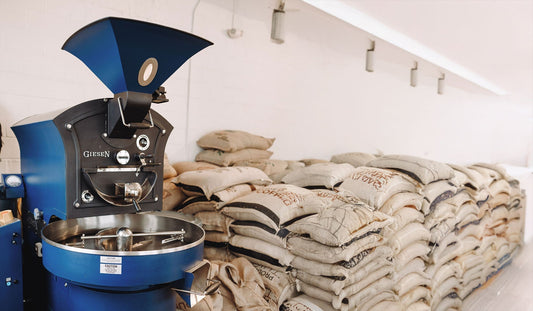An Arabica and Robusta blend is exactly what it sounds like: a mix of the two most common coffee varieties. What is a coffee blend in general, though? This common question is where things get a bit murkier. Technically, any combination of two or more different types or styles of coffee can be considered a blend, but context is crucial.
For example, in some cases, coffee blends exist to mask the flavors of low-quality coffee beans, boost profits by mixing beans with fillers, or as a marketing strategy to make a mediocre product more appealing.
On the other hand, well-crafted coffee blends can bring out complementary flavors and aromas or tame overpowering notes. An Arabica and Robusta blend could be a better choice for an espresso-based drink, like a cappuccino or latte, because adding a milder Arabica to a potent Robusta can make for a smoother, more balanced beverage.
Let’s explore the reasons why blends are getting so much attention lately.
1. Expanding the Menu
Arabica and Robusta are the two most widely available coffee varieties. Arabica accounts for roughly 60% of the world’s coffee, while Robusta makes up approximately 40%. That only leaves a tiny remaining percentage for other more obscure varieties, such as Liberica and Excelsa. You can read more about the Different Coffee Bean Varieties here.
Offering an Arabica and Robusta blend is a simple way to take the most ubiquitous varieties and turn them into something more unique. What is a coffee blend? Sometimes, it’s just a way to expand the menu and give customers something new to try, especially if other varieties aren’t readily available.
2. Creating New Coffee Experiences
Of course, not all Arabica and Robusta beans are the same! Countless other factors besides the coffee’s variety can affect the overall coffee experience—from the cherries’ origin and terroir to the methods and rituals used to process and roast them.
Someone who knows what they’re doing can create synergistic blends that bring out the best of each other. They might make an Arabica and Robusta blend because they want to add bright acidity to an especially deep, dark Robusta. Similarly, they may want to give an overly bright Arabica some extra depth and body.
It’s worth noting that while some blends can be palate-pleasing, many have the opposite effect. You can easily lose the subtle, nuanced flavors that make the coffees unique, ending up with tasting notes that are clashing or confusing. Using thoughtful ratios to achieve a harmonious balance is the key to successful blends.
3. Cutting the Cost of Pricier Beans

In some situations, a coffee blend is simply a way to stretch profits. For example, an Arabica and Robusta blend will typically be more affordable than the same Arabica variety on its own. Offering the blend comes with the benefit of name recognition—Arabica is known for being more of a luxury option.
Although blending beans isn’t always a nefarious practice, many blends on the market exist solely to make a lower-quality product seem more appealing. For example, the beans could be advertised as Arabica-Robusta, but in reality, you’re getting 5% Arabica and 95% Robusta. Or, the company could have a batch of beans that were processed or roasted poorly, so they blend that batch with better beans to mask the undesirable flavors.
To the casual coffee lover, an Arabica and Robusta blend can seem like the best of both worlds. However, it’s important to be vigilant about your source. If you’re not confident that you’re getting a high-quality blend, you’re better off buying individual varieties from a reputable source and then blending them yourself.
4. Adjusting Caffeine Levels
In some cases, a coffee blend is just a more potent or mild cup. Robusta coffee contains around 2.2–2.7% caffeine; Arabica coffee usually has around 1.2–1.5%. Adding Robusta can give Arabica an extra boost of caffeine that can be appealing to coffee enthusiasts who prefer a stronger cup but with a milder flavor.
Similarly, one might enjoy an Arabica and Robusta blend because they love the rich, earthy, bitter flavor of Robusta coffee, but they want slightly less caffeine. Blends can allow people to customize their caffeine kick without committing to one flavor profile.
5. Elevating Espresso-Based Drinks

Coffee blends are especially popular among people who enjoy espresso-based beverages, such as cappuccino and latte. Blends can deliver more complex flavors than either variety on its own.
A well-crafted blend may not be as ideal as a classic cup of coffee, but it could work well with highly concentrated brews that require smoothness and balance, rather than overly dominating flavor notes. For example, the fruity acidity of an Arabica could be too pronounced for an espresso shot. An Arabica and Robusta blend tempers that bite, adding richness and body.
Adding Robusta beans to an Arabica-based espresso drink can also produce a thicker, creamier layer of crema: the golden-brown foam that enhances the flavor, aroma, and texture of the espresso drink.
Shop Hand-Picked Coffee
What is a coffee blend? In our opinion, blends do have their place, but they’re not usually the best option. Of course, coffee culture is incredibly diverse, so if you love blends, don’t let us stop you!
Here at Ebru Coffee, we don’t offer blends at all. Instead, we focus on sourcing, producing, and roasting some of the world’s best specialty coffee beans. That way, you can experience the pure, unique goodness of single-origin coffees. And, if you decide to make your own Arabica and Robusta blend, you can customize the ratio to your exact preferences.
With our coffees, you can truly taste the subtle notes that make each variety so special. And, you can feel good about your purchase, knowing that our farm-to-cup coffee beans are sustainably and ethically sourced from all over the world, as well as transparent and traceable. Grab your go-to coffee beans, or try something new!





